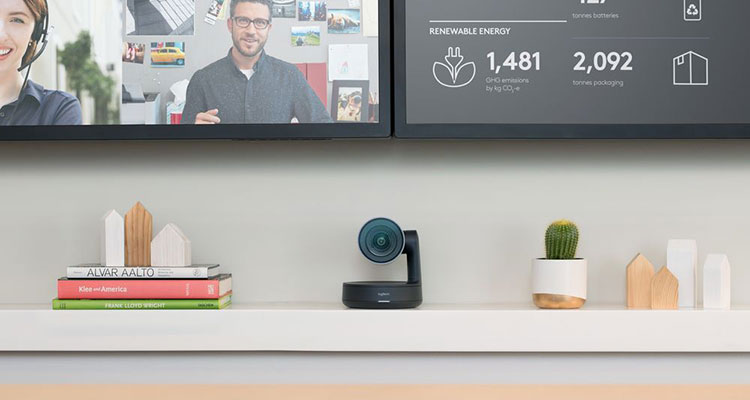Three Reasons to Invest in a 4K Video Conferencing Camera
 Lately, it seems like just about every device maker in the conferencing space is coming out with a 4K webcam or conference camera. It started in February 2017 when the Logitech BRIO 4K Pro Webcam was introduced at ISE, and since then I’ve seen announcements from Cisco, Panacast, Aver and Dolby (just to name a few).
Lately, it seems like just about every device maker in the conferencing space is coming out with a 4K webcam or conference camera. It started in February 2017 when the Logitech BRIO 4K Pro Webcam was introduced at ISE, and since then I’ve seen announcements from Cisco, Panacast, Aver and Dolby (just to name a few).
When I talk with colleagues and customers about 4K cameras, they often push back or dismiss it as unnecessary. I hear things like “4K is overkill,” or “My video conferencing app doesn’t support 4K and even if it did, IT wouldn’t allocate that kind of bandwidth.” Fair enough. But I also feel like 4K cameras are one of the most underrated and misunderstood technologies in our industry.
Below are three reasons it’s worth investing in 4K today:
- Better video at any resolution. 4K cameras include 13 megapixel sensors, higher quality optics and faster processors than 1080p cameras. While you might not be using 4K for video conferencing, you will still see a better quality image from the camera at any resolution thanks to the quality of the sensors and the advanced optics that are associated with a premium camera. In many 4K cameras, the processing horsepower needed to capture a 4K image can be used to deliver higher frame rates instead of higher resolution. Video calls or recordings at 1080p/60fps can provide a smoother and more immersive viewing experience than 4K calls at 30fps.
- Lossless zoom. Thanks to that 13 megapixel sensor, 4K cameras offer near lossless digital zoom when rendering video at 1080p. That means if you’re using video for applications like telemedicine, quality assurance, or film editing, you can zoom in up to five times with minimal quality loss. Lower-resolution cameras will drop resolution, or resort to “filling” in blank spaces when using digital zoom — you can’t zoom in to pixels that don’t exist.
- Beyond video calls. You can use these cameras for non-video conferencing applications, and the image quality will be outstanding. Just because it’s a conference cam doesn’t mean you need to limit your use to conference calls. 4K cameras can and should be used in conjunction with streaming and recording applications, many of which are 4K-capable today. For example, you can record DIY videos for posting on your corporate intranet or on YouTube, or stream to a large audience on Twitch. These platforms support 4K, so why not take advantage of them today?
It’s hard to predict when or if we’ll ever move to 4K video calls, but history suggests it’s inevitable. Nonetheless, a 4K camera’s superior image quality, higher frame rates and ability to support 4K recording and streaming make them worth the incremental investment, especially in light of the fact that today’s 4K cameras cost less than last year’s 1080p cameras.
Joan Vandermate joined Logitech in January 2016 and serves as global head of marketing for Logitech’s video collaboration business. Vandermate has more than 20 years of experience in marketing, product management, sales and business development. Her background includes tenures in the enterprise software, telecommunications and network infrastructure industries. Prior to joining Logitech, she served in executive leadership positions at Vidyo, Avaya, Polycom and Siemens.





